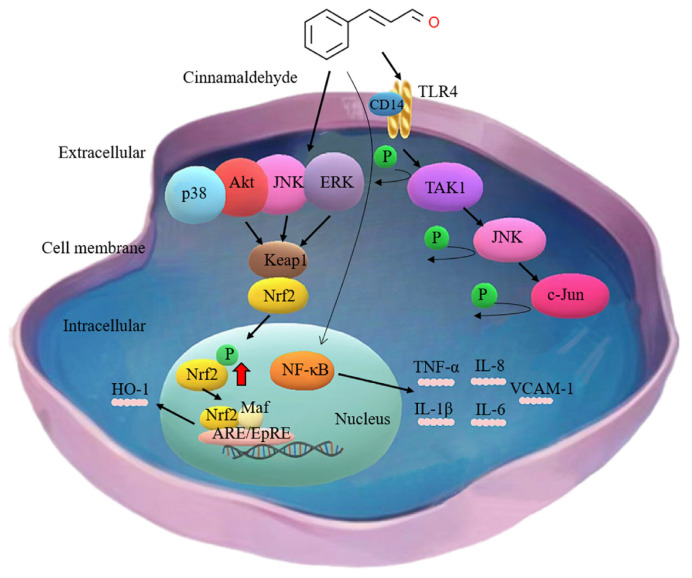Fig. 3.
The mechanism by which cinnamaldehyde exerts its anti-inflammatory effect in cancer. It has been demonstrated that cinnamaldehyde effectively inhibits inflammatory responses in cancer cells by modulating several signaling pathways, including ERK, AKT, Nrf2/Keap1-ARE, and JNK. By mitigating inflammation, cinnamaldehyde contributes to reducing the promotion of tumor development associated with inflammatory processes. NF-κB is indeed considered as the main target involved in the anti-inflammatory effects of cinnamaldehyde. TAK1, transforming growth factor-β-activated kinase 1; JNK, c-Jun N-terminal kinase; TLR4, Toll-like receptor 4; ERK, Extracellular signal-related kinase; Nrf2, Nuclear factor erythroid-2-related factor 2; Keap-1, Kelch-like ECH-associated protein 1; HO-1, heme oxygenase-1; VCAM-1, vascular cell adhesion molecule-1; IL-1β, interleukin-1β; TGF-β, transforming growth factor-β; AKT, Protein kinase B.

